Gabritab 50-AT Tablet
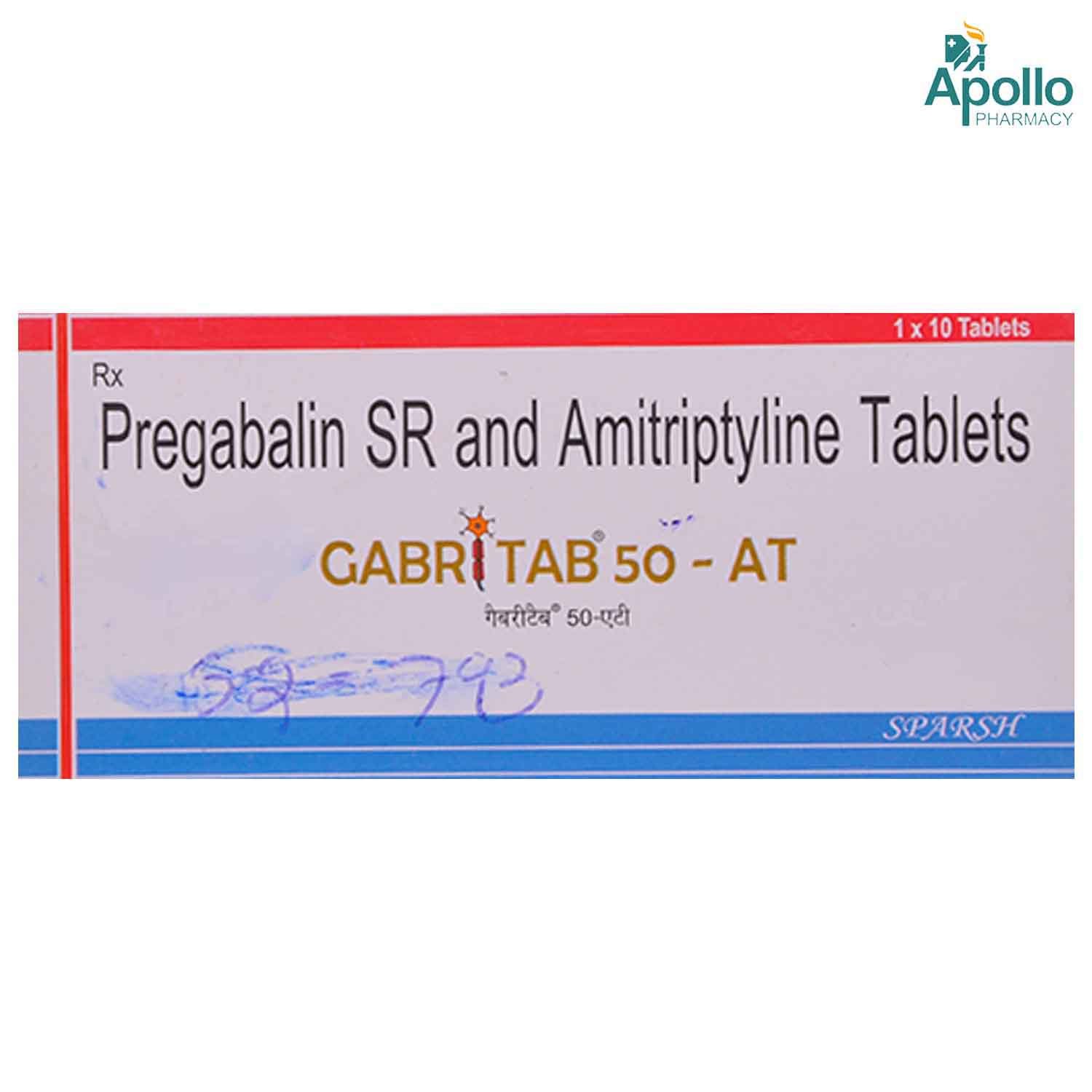
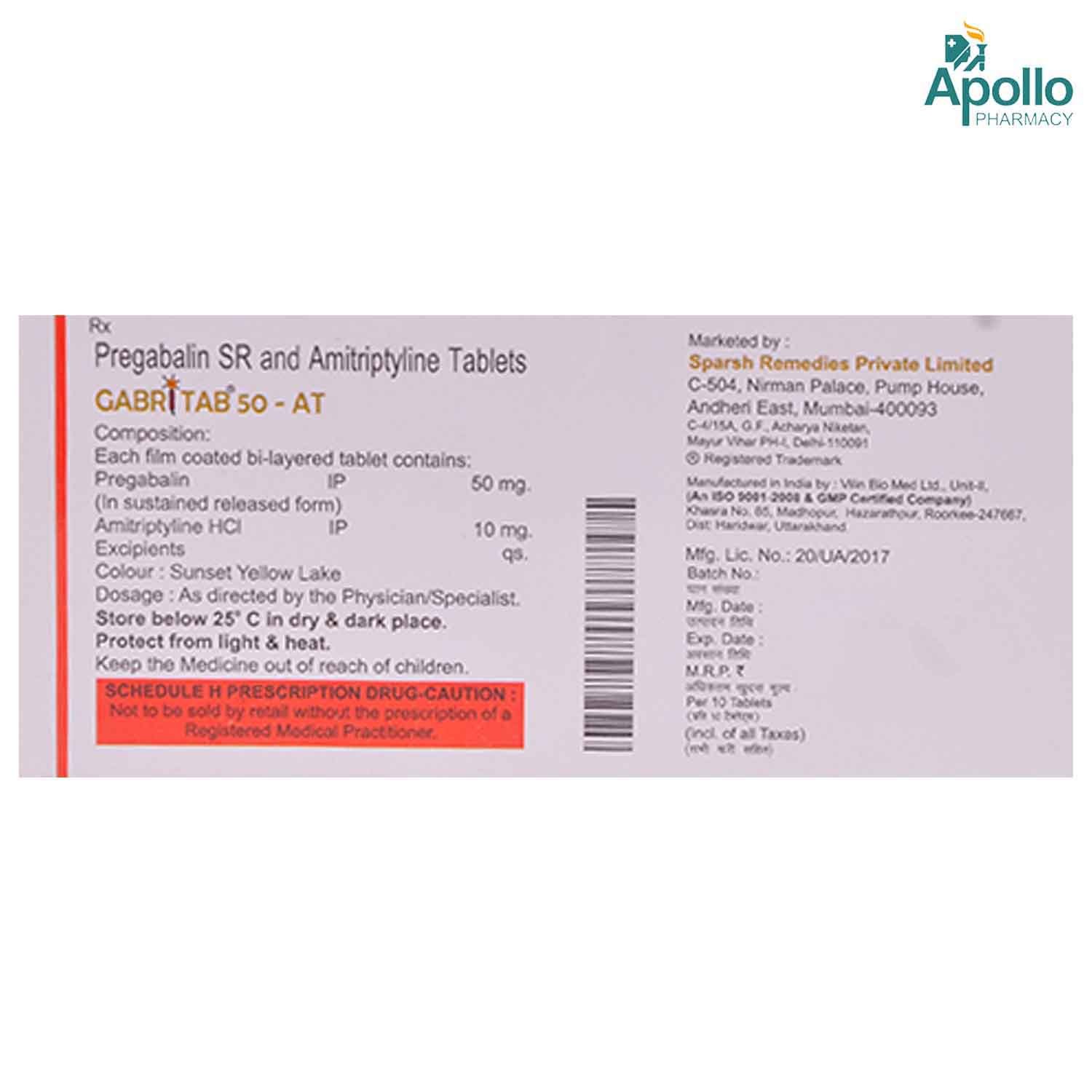
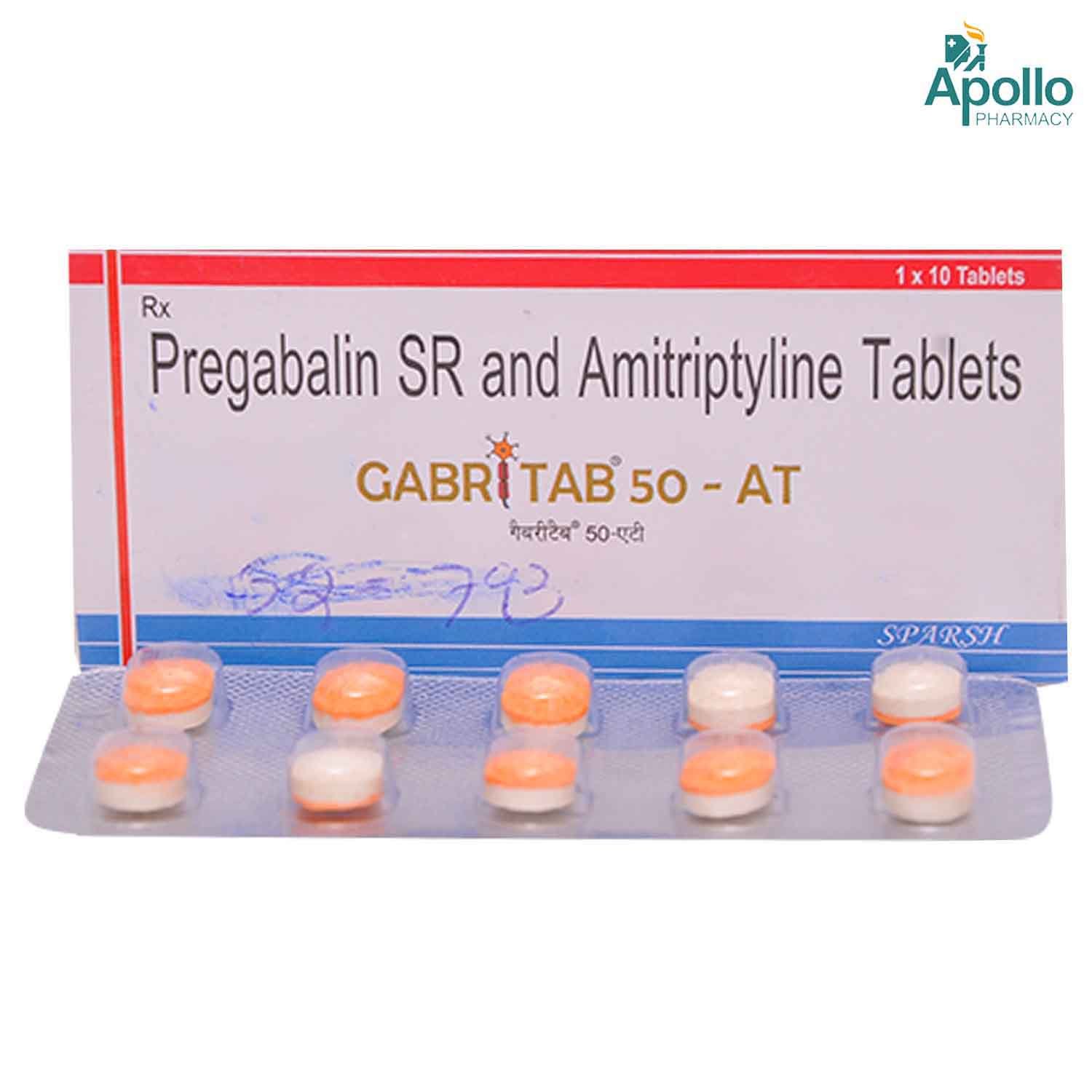
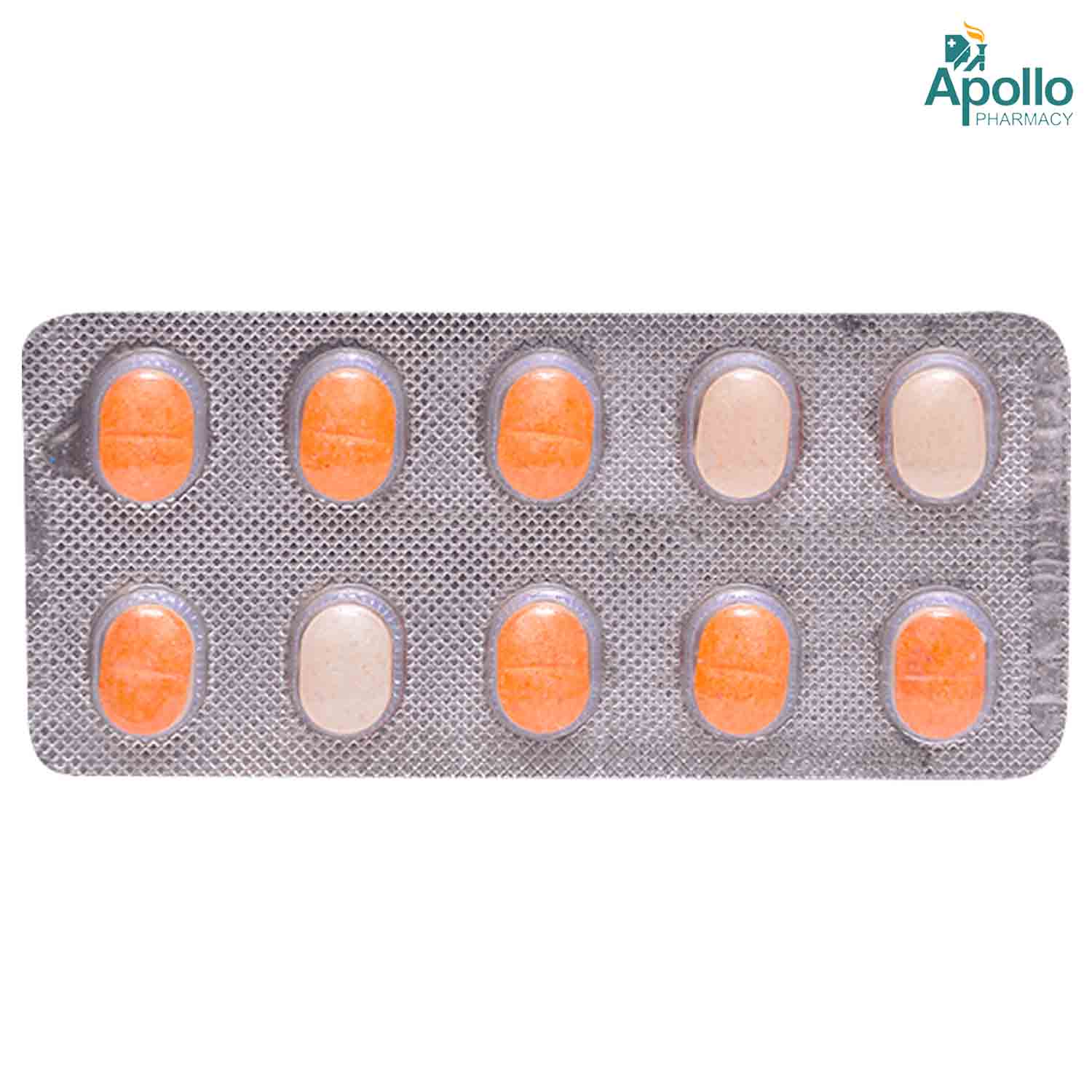
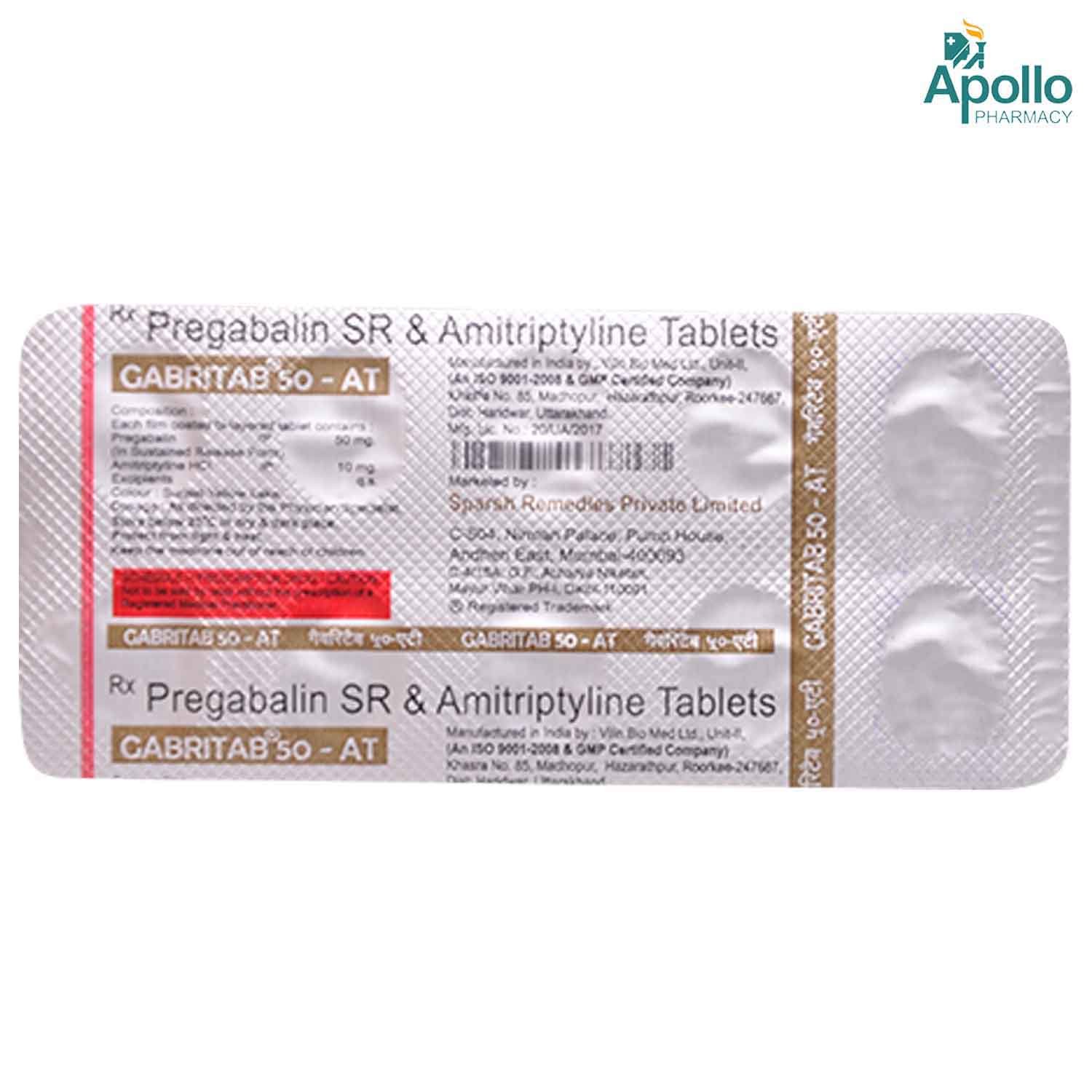
MRP ₹130
(Inclusive of all Taxes)
₹15.6 Cashback (12%)
know your delivery time
Provide Delivery Location
Composition :
Manufacturer/Marketer :
Consume Type :
Expires on or after :
Return Policy :

Secure Payment

Trusted by 8 Crore Indians

Genuine Products
Therapeutic Class
Country of origin
Manufacturer/Marketer address
Author Details
We provide you with authentic, trustworthy and relevant information
Disclaimer
Alcohol
Safe if prescribed
Avoid consumption of alcohol while taking Gabritab 50-AT Tablet as it may increase drowsiness and sleepiness.
Pregnancy
Consult your doctor
Please consult your doctor if you have any concerns regarding this, your doctor will prescribe only if the benefits outweigh the risks.
Breast Feeding
Consult your doctor
Consult your doctor before taking Gabritab 50-AT Tablet ; your doctor will decide whether Gabritab 50-AT Tablet can be taken by breastfeeding mothers or not.
Driving
Safe if prescribed
Gabritab 50-AT Tablet may cause drowsiness, sleepiness and blurred vision. Do not drive or operate machinery unless you are alert.
Liver
Consult your doctor
Dose adjustment may be needed in patients with liver impairment. Please consult your doctor if you have a liver impairment or any concerns regarding this.
Kidney
Consult your doctor
Dose adjustment may be needed in patients with kidney impairment. Please consult your doctor if you have kidney impairment or any concerns regarding this.
Children
Safe if prescribed
Gabritab 50-AT Tablet should not be given to children as the safety and efficacy have not been established.
Product Substitutes
About Gabritab 50-AT Tablet
Gabritab 50-AT Tablet is a combination medicine indicated for the management of neuropathic pain. Neuropathic pain is a chronic progressive nerve disease which causes nerve pain due to nerve damage or a malfunctioning nervous system. The pain could be intermittent or continuous, which is felt as a prickling, stabbing, tingling or burning sensation.
Gabritab 50-AT Tablet is a combination of two drugs: Pregabalin (anti-convulsant), and Amitriptyline (antidepressant). Pregabalin works by binding to the specific site on voltage-gated calcium channels; this helps in relieving nerve pain. Amitriptyline increases the level of serotonin and noradrenaline, thereby decreasing the movement of pain receptors. Together, Gabritab 50-AT Tablet helps to treat neuropathic pain.
You are advised to take Gabritab 50-AT Tablet for as long as your doctor has prescribed it for you, depending on your medical condition. In some cases, you may experience certain common side-effects such as weight gain, dry mouth, blurred vision, dizziness, tiredness, nausea, vomiting, diarrhoea, and constipation. Most of these side-effects do not require medical attention and will resolve gradually over time. However, you are advised to talk to your doctor if you experience these side-effects persistently.
Consult your doctor if you are pregnant or breastfeeding. Gabritab 50-AT Tablet may cause drowsiness and dizziness, so drive only if you are alert. Gabritab 50-AT Tablet should not be given to children as safety and effectiveness have not been established. Avoid consuming alcohol along with Gabritab 50-AT Tablet as it could lead to increased dizziness and sleepiness. Keep your doctor informed about your health condition and medicines to rule out any side-effects.
Uses of Gabritab 50-AT Tablet
Medicinal Benefits Mweb
Key Benefits
Gabritab 50-AT Tablet is a combination of two drugs: Pregabalin (anti-convulsant), and Amitriptyline (antidepressant). Pregabalin works by binding to the specific site on voltage-gated calcium channels; this helps in relieving nerve pain. Amitriptyline increases the level of serotonin and noradrenaline, thereby decreasing the movement of pain receptors. Together, Gabritab 50-AT Tablet helps to treat neuropathic pain.
Directions for Use
Side Effects of Gabritab 50-AT Tablet
- Weight gain
- Dry mouth
- Blurred vision
- Dizziness
- Tiredness
- Nausea
- Vomiting
- Diarrhoea
- Constipation
Drug Warnings
Do not take Gabritab 50-AT Tablet if you are allergic to any of its contents; if you have taken MAO inhibitors in the last 14days. Inform your doctor before taking Gabritab 50-AT Tablet if you have/had heart problems, bipolar syndrome, severe liver disease or porphyria. Consult your doctor if you are pregnant or breastfeeding. Gabritab 50-AT Tablet may cause drowsiness and dizziness, so drive only if you are alert. Gabritab 50-AT Tablet should not be given to children as safety and effectiveness have not been established. Avoid consuming alcohol along with Gabritab 50-AT Tablet as it could lead to increased drowsiness and sleepiness.
Drug-Drug Interactions
Drug-Drug Interactions
Login/Sign Up
Combining Gabritab 50-AT Tablet and Bepridil may increase the risk of irregular heartbeat.
How to manage the interaction:
Although combining Gabritab 50-AT Tablet with Bepridil may result in an interaction, it can be used if a doctor recommends it. If you have sudden dizziness, lightheadedness, fainting, or fast or rapid heartbeats during therapy, get emergency medical help. Do not discontinue any medication without consulting a doctor.
The combination of Gabritab 50-AT Tablet and Potassium chloride may cause stomach and upper intestinal discomfort. (Only applicable to an oral preparation)
How to manage the interaction:
Although co-administration of Gabritab 50-AT Tablet and Potassium chloride is not recommended as it can possibly lead to an interaction, they can be taken if prescribed by a doctor. If you experience severe stomach pain, bloating, sudden dizziness or lightheadedness, nausea, vomiting (in particular with blood), decreased hunger, and black stools while taking these medications, consult a doctor immediately. Do not discontinue any medications without talking to a doctor.
Combining Gabritab 50-AT Tablet and Grepafloxacin may increase the risk of irregular heartbeat.
How to manage the interaction:
Although combining Gabritab 50-AT Tablet with Grepafloxacin may result in an interaction, it can be used if a doctor recommends it. If you have sudden dizziness, lightheadedness, fainting, or fast or rapid heartbeats during therapy, get emergency medical help. Do not discontinue any medication without consulting a doctor. Note: Grepafloxacin is no longer available in the market. Grepafloxacin should not be combined with any other medications.
Combining Gabritab 50-AT Tablet and Dronedarone may increase the risk of irregular heartbeat.
How to manage the interaction:
Although combining Gabritab 50-AT Tablet with Dronedarone may result in an interaction, it can be used if a doctor recommends it. If you have any heart problems or electrolyte imbalances, you may be susceptible. If you have sudden dizziness, lightheadedness, fainting, or fast or rapid heartbeats during therapy, get emergency medical help. Do not discontinue any medication without consulting a doctor.
Taking Gabritab 50-AT Tablet and Ziprasidone may increase the risk of irregular heartbeat.
How to manage the interaction:
Although there is a interaction between Gabritab 50-AT Tablet with Ziprasidone, but it can be taken together if prescribed by your doctor. However, consult your doctor immediately if you experience sudden dizziness, lightheadedness, fainting, or fast or rapid heartbeats . Do not discontinue any medication without consulting a doctor.
Gabritab 50-AT Tablet and Thioridazine can enhance each other's effects when used together.
How to manage the interaction:
Although using Gabritab 50-AT Tablet and Thioridazine together can cause an interaction, they can be used if prescribed by a doctor. If you have extreme sleepiness, confusion, anxiety, vomiting, vision problems, feeling hot or cold, sweating, muscle stiffness, fainting, fits, or coma, seek medical help. Do not discontinue any medications without consulting a doctor.
Combining Gabritab 50-AT Tablet and Sparfloxacin may increase the risk of irregular heartbeat.
How to manage the interaction:
Although combining Gabritab 50-AT Tablet with Sparfloxacin may result in an interaction, it can be used if a doctor recommends it. If you have any heart problems or electrolyte imbalances, you may be susceptible. If you have sudden dizziness, lightheadedness, fainting, or fast or rapid heartbeats during therapy, get emergency medical help. Do not discontinue any medication without consulting a doctor. Note: Sparfloxacin is no longer available in the market. Grepafloxacin should not be combined with any other medications.
Combining Furazolidone with Gabritab 50-AT Tablet can increase the risk of serotonin syndrome(increased serotonin hormone).
How to manage the interaction:
Although using Furazolidone and Gabritab 50-AT Tablet together may cause an interaction, they can be taken if prescribed by a doctor. Consult a doctor if you have symptoms such as confusion, hallucination, fits, blood pressure alteration, increased heart rate, fever, excessive sweating, shivering or shaking, blurred vision, pain in the muscles or stiffness, incoordination, stomach cramps, nausea, vomiting, and diarrhea. Inform a doctor if you have recently taken Gabritab 50-AT Tablet. Do not discontinue any medications without consulting a doctor.
Taking Linezolid with Gabritab 50-AT Tablet can increase the risk of serotonin syndrome (increased serotonin hormone).
How to manage the interaction:
Although using Linezolid and Gabritab 50-AT Tablet together may cause an interaction, they can be taken if prescribed by a doctor. Consult a doctor if you have symptoms such as confusion, hallucination, fits, blood pressure alteration, increased heart rate, fever, excessive sweating, shivering or shaking, blurred vision, pain in the muscles or stiffness, incoordination, stomach cramps, nausea, vomiting, and diarrhea. Inform a doctor if you have recently taken Gabritab 50-AT Tablet. Do not discontinue any medications without consulting a doctor.
Combining Gabritab 50-AT Tablet and Pimozide may increase the risk of irregular heartbeat.
How to manage the interaction:
Although combining Gabritab 50-AT Tablet with Pimozide may result in an interaction, it can be used if a doctor recommends it. If you have any heart problems or electrolyte imbalances, you may be susceptible. If you have sudden dizziness, lightheadedness, fainting, or fast or rapid heartbeats during therapy, get emergency medical help. Do not discontinue any medication without consulting a doctor.
Drug-Food Interactions
Drug-Food Interactions
Login/Sign Up
Drug-Diseases Interactions
Drug-Diseases Interactions
Login/Sign Up
Drug-Drug Interactions Checker List
- DULOXETINE
- SERTRALINE
- ESCITALOPRAM
- FENTANYL
- HYDROCODONE
- ACETAMINOPHEN
- MORPHINE
- OXYCODONE
- TOPIRAMATE
- ALPRAZOLAM
- ZOLPIDEM
- DIPHENHYDRAMINE
- CETIRIZINE
- CYCLOBENZAPRINE
- LEVOTHYROXINE
Habit Forming
Diet & Lifestyle Advise
- Include food rich in vitamin B and D in your diet.
- Include cayenne pepper in your diet as it can help in lowering neuropathic pain.
- Exercising regularly helps in improving overall health and combating pain.
- Rest well, and get plenty of sleep.
- Try taking a warm bath, as it can be soothing.
- Avoid smoking and alcohol consumption.
- Meditation and yoga can help lower stress, decrease pain sensitivity and improves coping skills.
- Acupuncture can be helpful by stimulating pressure points.
- Using essential oils for massages can help increase circulation.
All Substitutes & Brand Comparisons
RX
Not for online salePregatex-AT Tablet 10's
Zancortex Pharma
₹210
(₹18.9 per unit)
65% COSTLIERRX
Out of StockNot for online saleGabapan-A Tablet 10's
Pills and Remedies Pvt Ltd
₹220
(₹19.8 per unit)
73% COSTLIER
Buy best C.n.s Drugs products by
Intas Pharmaceuticals Ltd
Sun Pharmaceutical Industries Ltd
Torrent Pharmaceuticals Ltd
Alkem Laboratories Ltd
Abbott India Ltd
Cipla Ltd
Alteus Biogenics Pvt Ltd
Micro Labs Ltd
Lupin Ltd
Ipca Laboratories Ltd
D D Pharmaceuticals Pvt Ltd
Icon Life Sciences
Mankind Pharma Pvt Ltd
Tripada Healthcare Pvt Ltd
Arinna Lifesciences Ltd
Linux Laboratories Pvt Ltd
East West Pharma India Pvt Ltd
La Renon Healthcare Pvt Ltd
Talent India Pvt Ltd
Tas Med India Pvt Ltd
Zydus Healthcare Ltd
Cnx Health Care Pvt Ltd
Eris Life Sciences Ltd
Leeford Healthcare Ltd
Emcure Pharmaceuticals Ltd
Macleods Pharmaceuticals Ltd
Sigmund Promedica
Aristo Pharmaceuticals Pvt Ltd
Dr Reddy's Laboratories Ltd
Troikaa Pharmaceuticals Ltd
Consern Pharma Ltd
Zydus Cadila
Shine Pharmaceuticals Ltd
Wockhardt Ltd
Ardent Life Sciences Pvt Ltd
Crescent Formulations Pvt Ltd
Theo Pharma Pvt Ltd
Reliance Formulation Pvt Ltd
Ikon Pharmaceuticals Pvt Ltd
Propel Healthcare
Neon Laboratories Ltd
Jagsam Pharma
Msn Laboratories Pvt Ltd
Morepen Laboratories Ltd
Pulse Pharmaceuticals
Sanofi India Ltd
Med Manor Organics Pvt Ltd
Hetero Healthcare Pvt Ltd
Novartis India Ltd
Crescent Therapeutics Ltd
Elder Pharmaceuticals Ltd
Solvate Laboratories Pvt Ltd
Akumentis Healthcare Ltd
Mova Pharmaceutical Pvt Ltd
Psyco Remedies Ltd
Tripada Lifecare Pvt Ltd
Ajanta Pharma Ltd
Cyrus Remedies Pvt Ltd
Medishri Healthcare Pvt Ltd
Cadila Healthcare Ltd
Glenmark Pharmaceuticals Ltd
Matteo Health Care Pvt Ltd
Hbc Life Sciences Pvt Ltd
Lyf Healthcare
Matias Healthcare Pvt Ltd
Mesmer Pharmaceuticals
Alembic Pharmaceuticals Ltd
Capital Pharma
Crescent Pharmaceuticals
Medopharm Pvt Ltd
Alniche Life Sciences Pvt Ltd
Kivi Labs Ltd
Talin Remedies Pvt Ltd
USV Pvt Ltd
Quince Lifesciences Pvt Ltd
Solis Pharmaceuticals
Infivis Life Care
Zuventus Healthcare Ltd
Cadila Pharmaceuticals Ltd
Pfizer Ltd
Wallace Pharmaceuticals Pvt Ltd
A N Pharmacia Laboratories Pvt Ltd
Blue Cross Laboratories Pvt Ltd
Jenburkt Pharmaceuticals Ltd
Lia Life Sciences Pvt Ltd
Mano Pharma
Medley Pharmaceuticals Ltd
Primus Remedies Pvt Ltd
FDC Ltd
Maneesh Pharmaceuticals Ltd
Apex Laboratories Pvt Ltd
Gagnant Healthcare Pvt Ltd
Ozone Pharmaceuticals Ltd
RPG Life Sciences Ltd
Strides Shasun Ltd
Unichem International
GlaxoSmithKline Pharmaceuticals Ltd
Kuresys Labs Pvt Ltd
LA Pharma
Trion Pharma India Llp

_0.jpg?tr=q-85)


